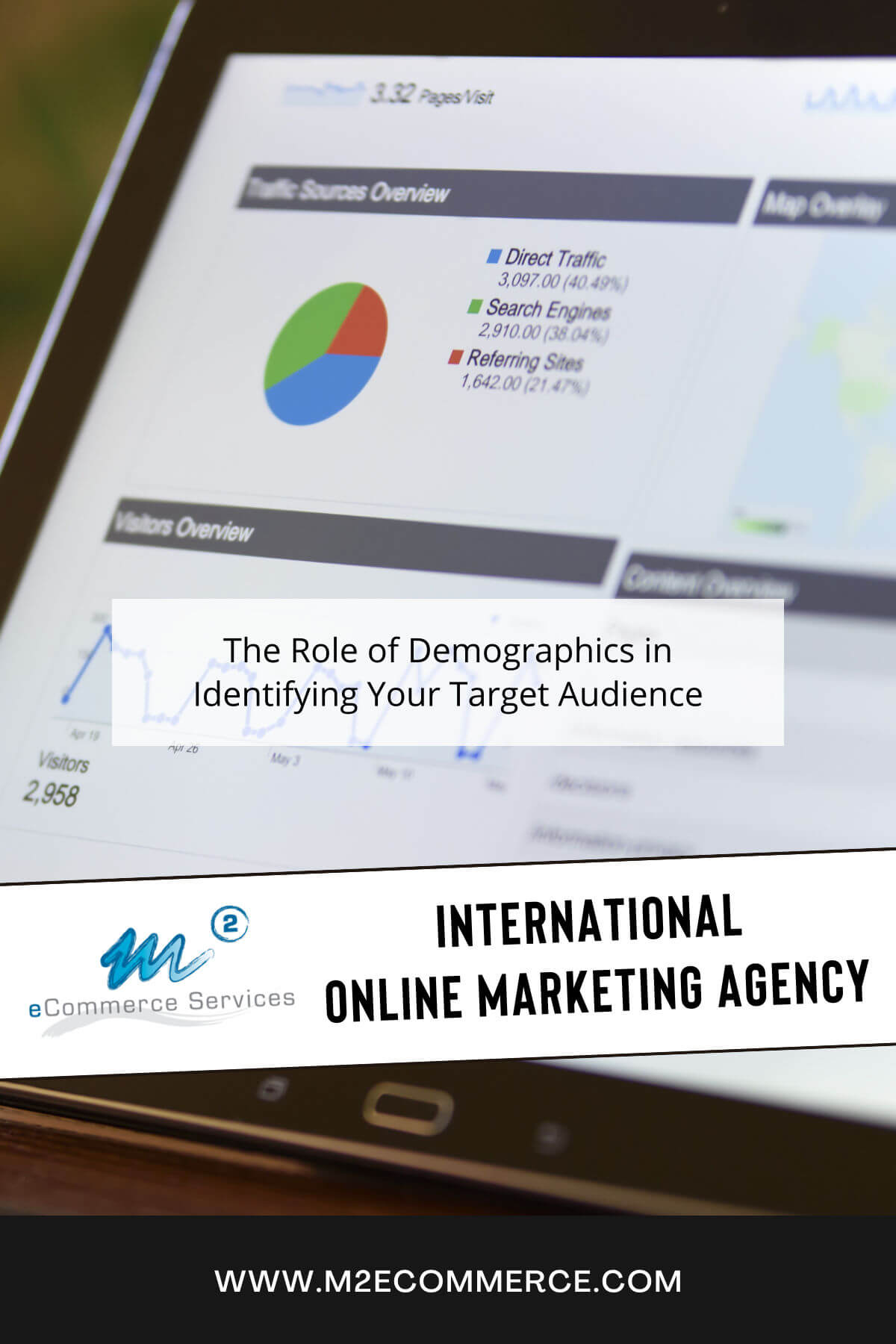Demographics. That all-important tool of modern marketing, allowing us to identify and target our key audience with precision.
It’s a powerful tool, one that can unlock the secrets of the marketplace and help us to hone in on our desired customer base. But what does it actually mean? What is the role of demographics in identifying our target audience?
In this article, we’ll explore the core principles of demographic marketing and discover how understanding them can give us an edge when it comes to unlocking our desired customer base.
We’ll look at how effective use of demographic data can help you hone your messaging, create powerful campaigns and tap into potential customers who may have been previously overlooked. So let’s delve into the world of demographics and see what insights they can offer when it comes to finding your ideal customer.
What Are Demographics?
Demographics are essential to understanding your target audience. They refer to characteristics such as age groups, ethnicity, gender, and income level that define an individual or group.
By leveraging demographic data, marketers can gain insight into their customers’ preferences and behaviors. This helps them develop strategies for reaching and engaging with their target audience more effectively.
For example, understanding the age groups of your customer base can help you craft messages tailored to specific age ranges. Knowing the ethnic backgrounds of your customers can enable you to create content that resonates with them in a meaningful way. Similarly, understanding gender and income levels of your audience allows you to tailor promotional offers and pricing strategies accordingly.
Having this kind of information at your disposal is invaluable in providing personalized experiences for your customers. Not only does it give you the ability to connect on an individual level with each customer; it also gives you a greater understanding of consumer patterns across different demographics which can be used to better optimize marketing campaigns over time.
To understand why demographics are so important for targeting audiences, let’s look at some further examples…
Why Are Demographics Important?
Demographics are an essential part of developing marketing and advertising strategies. By segmenting data based on demographic characteristics such as age, gender, income, and location, businesses can better identify their target audiences.
For example, if a company manufactures outdoor camping equipment, they may want to focus their marketing efforts towards young adults who live in suburban or rural areas and have higher disposable incomes.
Understanding the demographics of your target audience is key to effectively connecting with them. By taking into account the various factors that shape the behavior and preferences of your target group, you can create tailored messages that will resonate with them. This will increase the likelihood of successfully engaging them with your brand and product offerings.
In order to effectively identify your target audience, it is important to have an understanding of who they are and what motivates them. This involves carefully analyzing consumer data to determine how best to reach them in a way that resonates with their needs and interests.
Additionally, having a clear understanding of the demographics associated with different market segments will help you develop strategies for targeting specific audiences more efficiently and effectively. With this information at hand, you can craft more successful marketing campaigns that will ultimately lead to better outcomes for your business.
Moving forward into the next section about identifying your target audience, it is important to keep these insights in mind when designing strategies for reaching potential customers.
Identifying Your Target Audience
Understanding the demographics of your target audience is essential for successful marketing. It allows you to create powerful and engaging campaigns that capture customers’ attention. By gathering and analyzing demographic data, it is possible to identify patterns that can be used to create a strategy tailored to a specific group of people.
When identifying your target audience, it is important to consider the following factors:
- Age
- Gender
- Location
- Education Level
- Values/Beliefs
- Attitudes
- Lifestyle
Data segmentation can be used to further refine your target audience. This process involves grouping customers based on their characteristics, such as income level or family size, so that you can create more targeted campaigns for each group. This technique allows you to tailor messages and offers in an effective way, which leads to higher engagement from customers.
Ultimately, understanding your target audience’s demographic data helps you build relationships with them by connecting with them on a deeper level. By utilizing this data, you can create campaigns that resonate with them and lead to increased customer loyalty. With this knowledge at hand, you are better equipped to craft compelling messages that will attract customers and keep them engaged in the long run.
Collecting And Analyzing Demographic Data
When collecting and analyzing demographic data for marketing research, understanding the target audience is key. One of the most effective methods for gathering this data is through social media platforms. By engaging with users on these sites, we can gain valuable insights into consumer behavior and preferences.
To monitor user engagement with our brand, it is important to consider age groups when developing marketing strategies. Demographic data collected from social media channels can break down user activity by age to help us identify which age groups are engaging with our products or services.
This data also allows us to create targeted campaigns tailored to specific age groups. We can then use this information to better understand our target audience and create content that resonates with them more effectively. Our goal should be to craft campaigns that capture the attention of customers in a way that speaks to their individual interests and needs.
| Age Group | Engagement Data | Strategies |
|---|---|---|
| 18-24 years old | Likes, comments, shares | Create content tailored for young adult interests and needs |
| 25-44 years old | Follows, views, clicks links | Develop campaigns targeting middle-aged adults who may need more detailed product information |
| 45-59 years old | Reviews, visits websites | Craft messaging that provides solutions for older adults seeking practical solutions |
| 60+ years old | Shares, subscribes to emails | Design campaigns that focus on the value of the product and/or service to this age group. |
Understanding Your Target Audience
When attempting to identify the target audience of your product or service, understanding the demographics of that audience is key. This process requires leveraging segmentation strategies; in other words, breaking down the population into distinct groups based on characteristics such as age, gender, location and income.
Such segmentation helps you determine which segments are most likely to be interested in your offering and allows you to reach out directly to those individuals. A demographic marketing researcher seeks to gain insight into these different segments and answer questions such as: Which segment(s) should be targeted? How can we best reach them? What type of message will resonate with them?
The answers to these questions can help you craft effective marketing campaigns that will yield results. By understanding the demographics of a potential customer base, it becomes easier to create messaging that resonates with them and increase engagement. Additionally, knowing how each demographic behaves makes it possible for companies to tailor their offerings more accurately.
With this knowledge in hand, businesses can make more informed decisions about reaching out directly to their target audiences and getting the desired response from them. Moving forward, this information can then be used to craft messages tailored specifically towards each demographic group while also fine-tuning existing strategies for maximum efficiency.
Now that we have a better understanding of our target audience’s demographics, let’s consider how best to craft our messaging in order to get their attention.
Crafting Your Messaging
Demographic characteristics are essential to consider when crafting your messaging strategy.
Understanding the age, gender, income, and other characteristics of your target audience will help ensure that your message resonates with them.
By taking the time to research your target audience, you’ll be able to tailor your messaging to the specific interests and needs of that demographic.
This will help ensure that your message is effective and successful.
Demographic Characteristics
Demographics play a huge role in crafting effective messaging for any target audience. It’s important to understand the age groups and economic status of your target audience when mapping out your messaging.
For instance, if you’re targeting an older demographic, such as retired individuals, then you may want to focus on the security and stability of your product or service. On the other hand, if you’re targeting younger age groups with lower levels of disposable income, then your message should focus on affordability and value.
Another key demographic to consider is economic status. Lower-income audiences will be more responsive to messages that emphasize cost savings and affordability. Meanwhile, higher-income groups may be more receptive to messages that emphasize luxury or convenience.
By understanding the different economic statuses of potential customers, you can craft a message that resonates with each group in a meaningful way. It’s essential to take into account all demographic factors when creating a marketing strategy so that you can craft messages that speak directly to each segment of your target audience.
This will help ensure maximum engagement and success from your campaigns.
Messaging Strategies
Once you’ve identified the demographics of your target audience, the next step is to develop messaging strategies that will resonate with each segment.
Segmentation strategies can range from simple demographic targeting, such as age and gender, to more advanced techniques like social media targeting or interest-based targeting.
By utilizing these techniques, you can create messages that are tailored to each segment’s specific needs and interests.
For example, if you’re targeting an older demographic who values security and stability, then you may want to focus on those aspects when crafting your message.
On the other hand, if you’re targeting a younger group who values affordability, then your message should emphasize cost savings and value.
Whatever your target audience’s preferences are, it’s important to take them into account when creating your messaging strategy.
By taking the time to understand what resonates with different segments of your target audience, you can create effective messaging that will drive engagement and help ensure the success of your campaigns.
With careful consideration and strategic segmentation strategies, you can maximize your reach and effectively engage with all potential customers.
Optimizing Your Campaigns
Understanding your target audience is like a jigsaw puzzle; with each demographic piece adding to the overall picture.
As a demographic marketing researcher, it’s essential to assess the data available and use it to build campaigns that accurately reflect the needs of your intended audience.
To do this effectively, you must track analytics and create surveys to further understand the buying patterns, preferences and lifestyle behaviors of your target market.
Analytics are essential for measuring success in any marketing campaign. Tracking customer journeys from start to finish can allow you to determine how engaged customers are with your product or service, and where improvements need to be made.
Surveys can provide invaluable insights into customer loyalty and satisfaction, as well as other areas such as likes/dislikes, spending habits and motivations.
It is important to remember that demographics are only one part of understanding your target audience; however, by gathering data through tracking analytics and creating surveys you can gain deeper insights into their behavior which can be used to optimize campaigns for maximum reach and engagement.
A carefully considered approach will help ensure that you capture the right people at the right time in order to maximize returns on investment.
Frequently Asked Questions
How Can I Find The Right Demographic Data For My Target Audience?
When you’re analyzing trends and segmenting strategies to find the right demographic data for your target audience, it’s important to take a deep dive into the data.
You’ll want to pay close attention to factors like age, gender, location, occupation and income.
By taking a proactive approach and utilizing sophisticated analytics tools you can gain deeper insights into how these demographics affect your customer base.
With this knowledge in hand you’ll be better equipped to make informed decisions about targeting the right people with the right message.
How Do I Use Demographic Data To Tailor My Messaging?
Gathering accurate demographic data is key for targeting your ideal customer segment. With this data, you can tailor your messaging to the specific needs of each group, creating a more powerful connection with them.
By carefully analyzing the data, you can optimize every aspect of your marketing plan to ensure maximum reach and engagement. A detailed understanding of demographics can help put you in control of your target audience’s experience, leading to better ROI and higher conversion rates.
What Are The Best Methods For Collecting Demographic Data?
Surveying and analyzing demographic data is the best way to gain insight into your target audience.
As a demographic marketing researcher, I understand the importance of designing surveys that capture accurate information and using data analysis to interpret what it means for your campaign.
Symbolic language can be used to draw in participants and give them a sense of control over their input.
By understanding who you are targeting, you will be able to create messages tailored to them that will resonate more effectively.
How Can I Ensure I Am Reaching The Right Audience With My Campaigns?
Understanding your target audience is key when it comes to successful campaigns. Utilizing demographic data allows you to segment markets and identify trends that are reflective of consumer behavior.
To ensure your message is reaching the right people, you need to understand the age, gender, location and other characteristics of your target audience. Through segmenting markets based on demographics, you can gain insight into consumer behavior and create campaigns that are tailored to resonate with each individual consumer.
How Can I Use Demographic Data To Measure The Success Of My Campaigns?
With the advent of data driven insights, measuring the success of campaigns has never been easier.
Audience segmentation is key to unlocking the full potential of demographic data and leveraging it to gain an edge over competitors.
By breaking down your customers into distinct segments based on age, gender and location, you can quickly identify which campaigns are resonating with each segment and adjust your strategy accordingly.
This allows you to make sure that your campaigns are delivering maximum ROI and stay ahead in the ever-evolving marketing landscape.
Conclusion
Demographic data can be a powerful tool for identifying your target audience and ensuring that you are accurately targeting them with your campaigns. With the right information, you can tailor messaging to better engage the audience and measure success more effectively.
As a demographic marketing researcher, I’ve seen first-hand how this data can revolutionize a company’s strategies. In today’s data-driven world, having access to comprehensive demographic information is like having a crystal ball – you can see into the future and make informed decisions about where to focus your efforts.
It’s no longer enough to guess or rely on intuition; using demographic data is essential for any successful marketing campaign.
Understand the role of demographics in identifying your target audience – reach out to our experts today!
With a focus on quality and a deep understanding of demographics, our agency has helped countless clients identify and reach their target audience. Let us show you how to leverage demographics to achieve your digital marketing goals.



